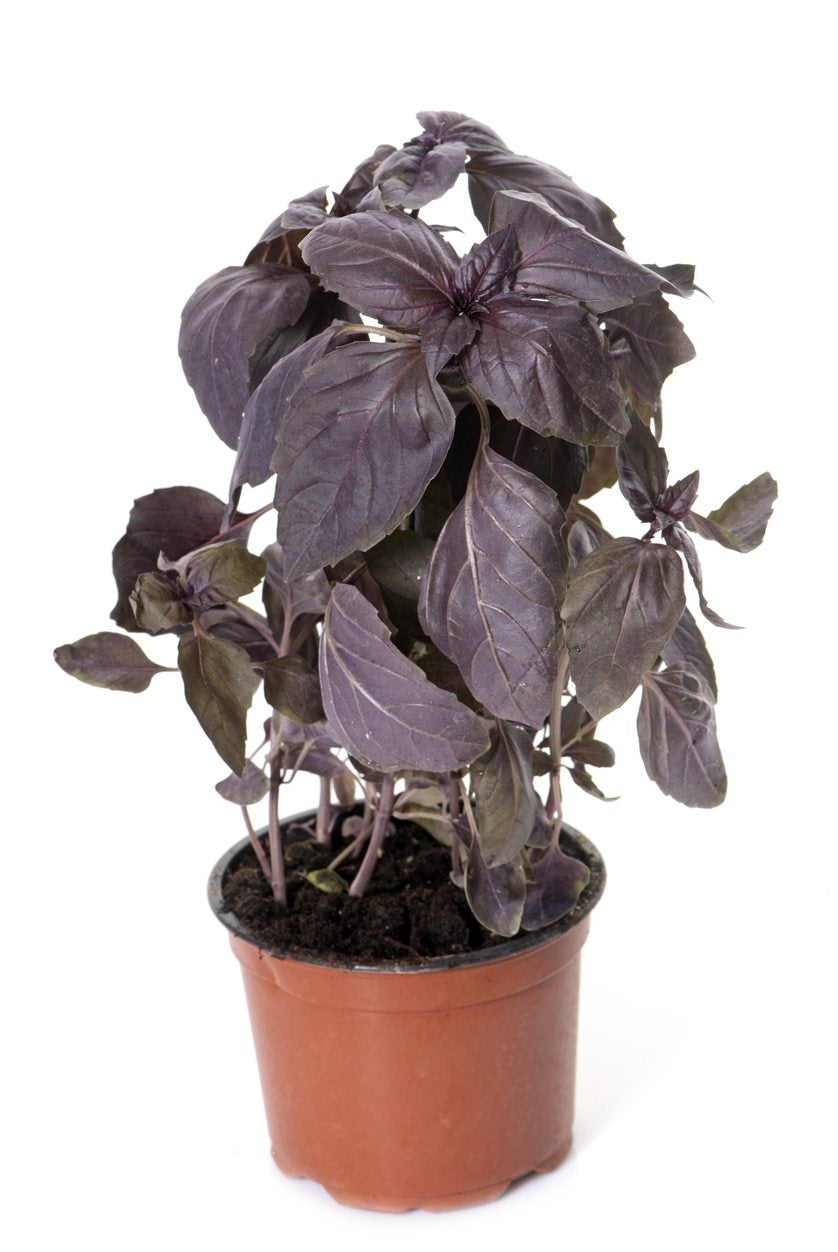Red Basil Care: How To Grow Red Rubin Basil Plants


What is red basil? Also known as Red Rubin basil, red basil (Ocimum basilicum purpurascens) is a compact basil plant with handsome reddish purple foliage and a delightful aroma. The small pink flowers are an added bonus in mid to late summer. Want to learn more about growing Red Rubin basil? Read on!
How to Grow Red Rubin Basil Plants
Red basil plants add beauty and interest to the garden. Plant red basil in containers or tuck a few in a bed along with other annuals. The plant is ornamental, and the leaves can be used for cooking or to make flavored vinegars. The flavor is a bit more pungent than other types of basil, so use it sparingly.
Red Rubin basil is easy to grow from seed after all danger of frost has passed in spring, or plant seeds indoors six to eight weeks ahead of time. Alternatively, propagate Red Rubin basil by taking stem cuttings from an existing plant.
This annual herb requires rich, well-drained soil and at least six hours of bright sunlight.
Red Basil Care and Harvest
Water Red Rubin basil plants every week during dry weather. Water at the base of the plant to keep the leaves dry and prevent powdery mildew and other fungal diseases. Spread about an inch (2.5 cm.) of mulch around the plants to keep the soil cool and moist.
Feed Red Rubin basil plants two or three times during active growth. Pinch the central stem when the seedlings are about 6 inches (15 cm.) tall to promote bushy growth. Remove flower spikes regularly.
Harvest Red Rubin basil when the plants have at least eight leaves but leave the first set of leaves at the base of the stem. You can also harvest entire plants and hang them upside down in a cool, arid location to dry, or snip and freeze the tender stems.
Sign up for the Gardening Know How newsletter today and receive a free copy of our e-book "How to Grow Delicious Tomatoes".
Note that Red Rubin basil declines once temperatures drop to about 50 degrees F. (10 C.).

A Credentialed Garden Writer, Mary H. Dyer was with Gardening Know How in the very beginning, publishing articles as early as 2007.